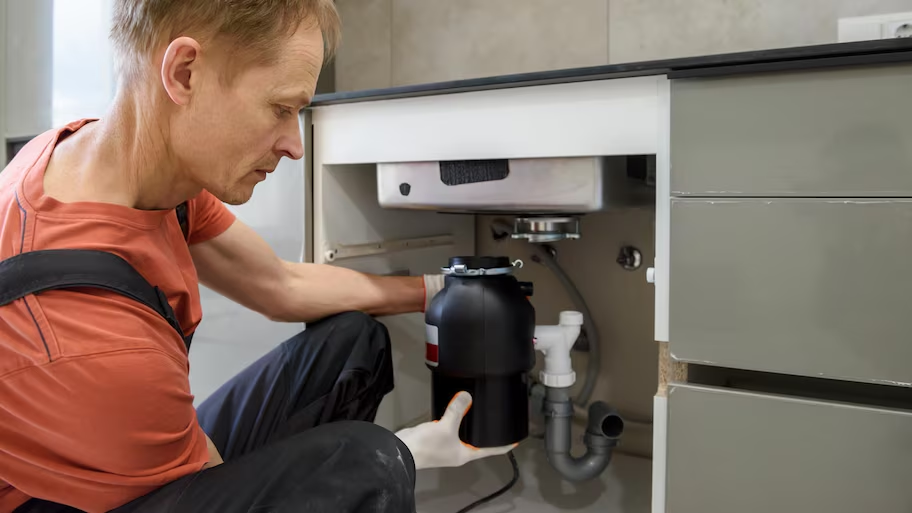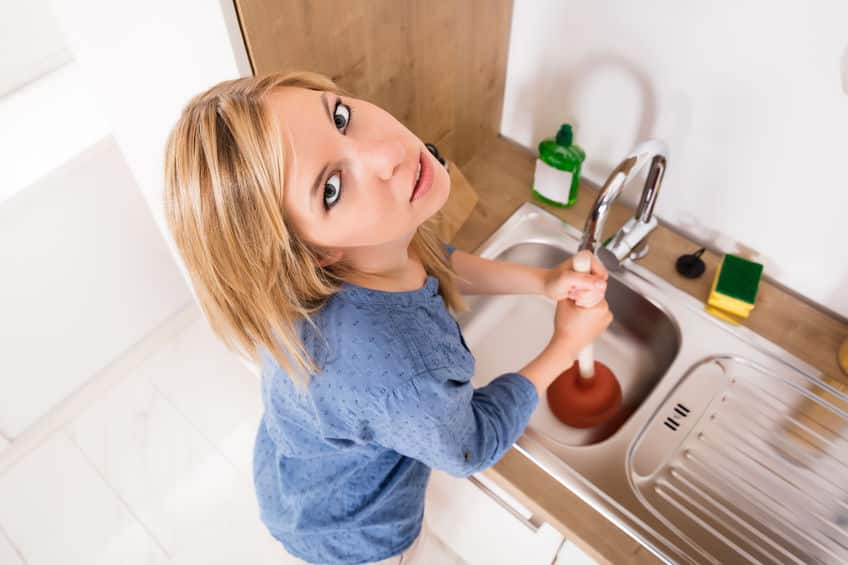The content in the next paragraphs involving Why Is My Garbage Disposal Leaking From the Bottom? is pretty much compelling. Give it a try and make your own personal ideas.

Waste disposal unit are crucial kitchen area home appliances that assist in throwing away food waste effectively. However, a dripping garbage disposal can be an irritating and untidy problem to take care of. Thankfully, several leaks can be dealt with easily with a couple of simple actions. In this short article, we will certainly talk about exactly how to deal with a leaking waste disposal unit properly.
Introduction
Garbage disposals are mounted under cooking area sinks and are designed to shred food waste into smaller items, permitting it to travel through the pipes system easily. While these devices are generally reputable, leaks can happen gradually because of deterioration, loose connections, or damage to the unit.
Step-by-Step Overview to Fixing a Leaking Waste Disposal Unit
Switch off the Power
Prior to trying any type of repairs, guarantee that the power to the garbage disposal device is turned off to avoid the danger of electrical shock.
Situate the Leakage
Recognize the exact location of the leak and identify the cause
Tighten Connections
Use a wrench to tighten any loosened links in between the disposal system and the pipes system.
Replace Seals or Gaskets
If the leak is due to used seals or gaskets, get rid of the old elements and change them with new ones.
Patching Splits or Openings
For splits or openings in the disposal unit, use epoxy or a suitable patching product to secure the broken location.
Identifying the Source of the Leak
Before attempting to repair a dripping waste disposal unit, it is important to recognize the source of the leak. This can generally be done through aesthetic assessment or by carrying out simple tests.
Visual Examination
Check the garbage disposal system carefully for any kind of signs of water leak. Pay very close attention to locations around seals, gaskets, and connection points.
Checking for Leaks
One means to examine for leakages is by running water via the disposal device and looking for any visible signs of leakage.
Common Root Causes Of Leaks in Garbage Disposals
Worn Seals and Gaskets
Seals and gaskets play an important role in preventing water from dripping out of the waste disposal unit. Gradually, these elements can deteriorate, bring about leaks around the disposal unit.
Loose Connections
The links between the waste disposal unit and the pipes system can end up being loosened in time, causing water to leakage out throughout operation.
Splits or Holes in the Disposal System
Physical damage to the waste disposal unit, such as fractures or holes in the real estate, can likewise cause leakages.
Tools and Materials Needed for Dealing With a Leaking Garbage Disposal
Before starting the repair work process, gather the required devices and products, including a screwdriver, adjustable wrench, plumbing professional's putty, substitute seals or gaskets, and epoxy or patching material for fixing cracks or openings.
Examining the Waste Disposal Unit After Repair Work
As soon as the fixing is total, examine the garbage disposal by running water with it to make certain that the leakage has been dealt with.
Preventive Upkeep Tips to Avoid Future Leaks
To stop future leaks, it is essential to perform regular upkeep on your garbage disposal. This consists of maintaining it tidy, avoiding putting non-food things or tough things down the disposal, and occasionally looking for leakages or various other problems.
Conclusion
Finally, taking care of a leaking waste disposal unit is a relatively straightforward process that can be finished with fundamental devices and materials. By following the actions outlined in this short article and practicing preventive upkeep, you can keep your waste disposal unit in good working condition and avoid costly repair services in the future.
What to Do About a Leaking Garbage Disposal
A leaking garbage disposal often goes unnoticed until you confront a sopping cabinet, a foul-smelling puddle, or an audible drip-drip-drip from the unit. The fix can be frustrating, too, because the leak can stem from a number of components in the system. Fortunately, with a little sleuthing, you can zero in on the leak and—depending on the exact location—stop the icky oozing and repair the component that caused it. Worst case scenario, if it turns out that the garbage disposal must be replaced, installing a new one is a reasonable do-it-yourself task for those with basic plumbing skills. Read on to keep the cash you’d otherwise hand over to a pro.
Prepare to find the leak
Prior to testing the garbage disposal for leaks, unplug it at the wall outlet and turn off the power from the breaker box to prevent electrical shock. Then insert a watertight sink stopper into your sink drain and wipe the unit dry with a clean cloth. In any handy container, mix a few drops of food coloring into a few cups of water, and pour the dyed water onto the sink stopper to help you locate the leak.
Investigate the source
the top, where the disposal meets the sink drain the side, where the dishwasher hose or main drain pipe connects to the disposal or the bottom of the unit Inspect each of these locations while gliding a light-colored rag over the unit; the dyed water will readily show on the rag and reveal the location of the leak. If a leak isn’t immediately apparent, remove the sink stopper and pour a few more cups of dyed water down the sink drain, then check for leaks again. Leaks near the top of the unit are more likely to show themselves while the sink is plugged, while side and bottom leaks are more noticeable while the sink is unplugged.
The metal sink flange that sits directly inside the sink drain is typically sealed around the top with plumber’s putty (a clay-like sealant) and then secured from under the sink with bolts. If the plumber’s putty deteriorates, or the bolts loosen, the flange can no longer form a watertight seal between the sink drain and the disposal—which could cause a leak at the top of the unit.
To reseal the leaky flange, you must first detach the garbage disposal. Start by loosening the screws securing the main drain pipe to the disposal, then loosen the screws in the metal clamp securing the dishwasher hose to the disposal and detach the drain pipe and dishwasher hose from the disposal. Loosen the screws in the mounting ring that connects the disposal to the metal mounting assembly beneath the sink, then pull down the disposal and carefully set it on a clean, dry surface. Loosen the bolts in the mounting assembly with a wrench, then pull down the mounting assembly and set it near the disposal.

As an avid reader on The Handy Guide To Fixing Your Garbage Disposal Leaking, I thought sharing that article was smart. So long as you enjoyed our article kindly be sure to pass it around. We recognize the value of reading our article about How to fix a pretty consistent leak from my garbage disposal.
Detail